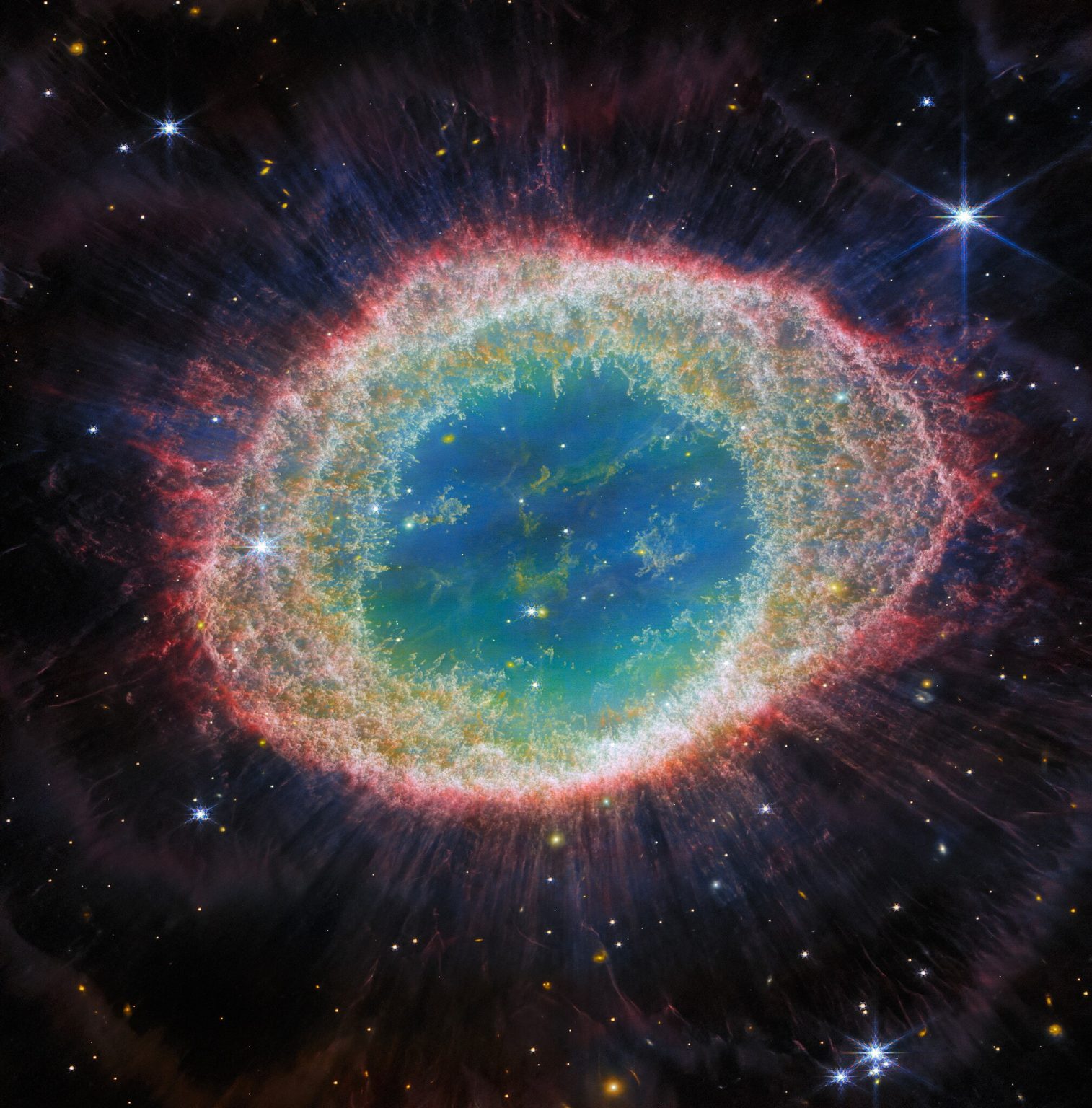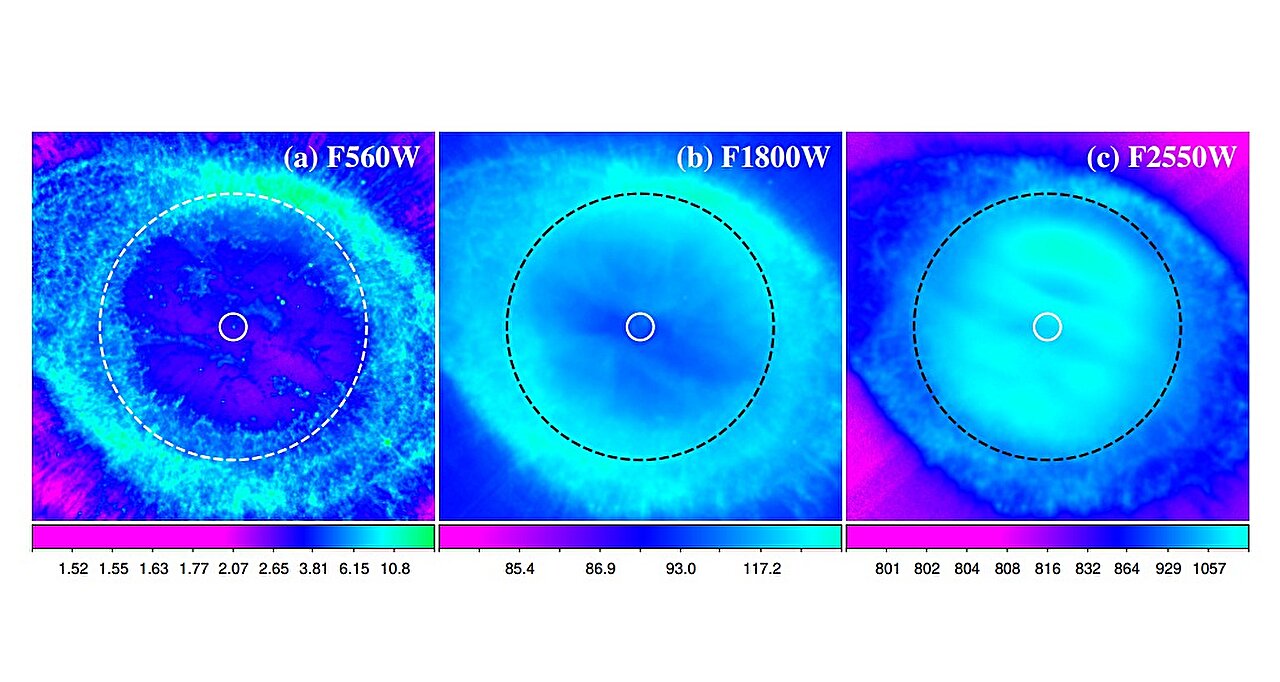Astronomers used the James Webb Telescope (JWST) to observe the planetary nebula NGC 6720, better known as the Ring Nebula. They found that its central star is surrounded by a ring of dust.

The Ring Nebula is located 2,570 light-years away from Earth toward the constellation Lyra. It is considered a classic example of a planetary nebula. Such objects are formed in the final evolution of sun-like stars when they reach the red giant stage and then shed their upper atmospheres. The result is a gas-dust nebula with an exposed stellar core at its center, which gradually transforms into a white dwarf.
Astronomers have repeatedly observed the Ring Nebula in the past. They managed to establish that its diameter is 1.3 light-years. At the center of the nebula is a stellar core whose mass is about 0.61 solar masses and whose effective surface temperature is 135,000 degrees Celsius. A star is composed mostly of carbon and oxygen with a thin outer shell of lighter elements.

A team of researchers from NASA’s Jet Propulsion Laboratory recently conducted a new survey of the Ring Nebula. The JWST was used for this purpose. Observations revealed the presence of a compact dust disk around the central star. According to scientists, its size is about 2,600 a. e., and it consists of relatively small grains of amorphous silicate dust. The total mass of dust is estimated to be about 0.00000186 Earth masses.
In addition, observations have shown that the central star of the Ring Nebula has a luminosity at 310 solar luminosities and exhibits significant photometric variability. It may be caused by the presence of a nearby companion dwarf star with a mass of less than 0.1 solar mass. Based on their findings, the authors of the study believe that the dust cloud may be a remnant of a disk formed by binary interactions at an earlier stage of this star’s evolution, which has now almost completely dissipated.
Previously, we shared fascinating facts about the Iris Nebula.
According to Phys.org


